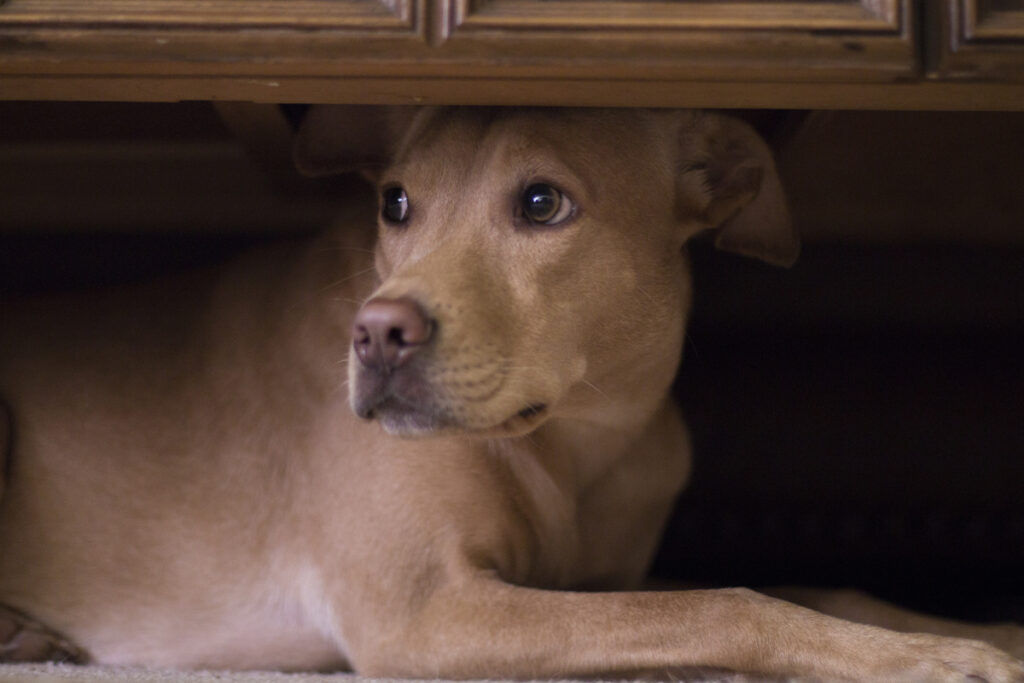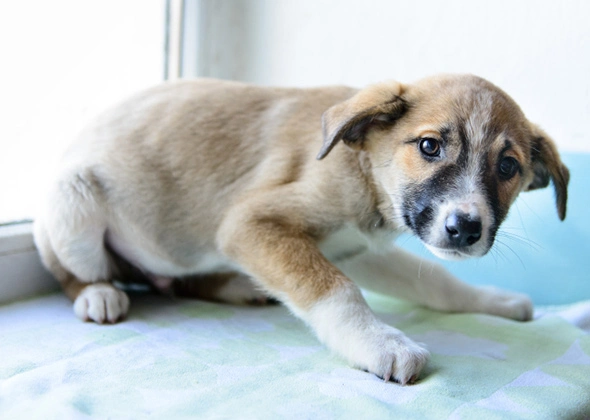We previously discussed the different socialization periods for your puppy, but only briefly touched on the fact that during that time your puppy will experience a fear period. There are actually two separate fear periods – and both are normal developmental stages for any puppy. There is nothing that you can do to prevent them from happening but being aware of what they are and when they happen can help to safeguard your puppy from any potential negative impacts.
FIRST FEAR PERIOD
Your puppy’s first fear period occurs between 8 to 11 weeks of age. Coincidentally, this is right around the time that you bring your new puppy home. It is important that you are not overwhelming your puppy during this time. This is also a critical time to control your puppy’s environment while allowing for safe and positive interactions with new people and experiences. As with all aspects of puppy socialization it is imperative that you go at your puppy’s pace.
SECOND FEAR PERIOD
The second fear period happens somewhere in the range of 6 to 14 months of age. I know, that’s a pretty big range… but each puppy will be different. Small breeds may experience this period earlier than larger breed puppies. Since your puppy is now in the adolescent stage and no longer look like your little puppy, often this fear period sneaks up on parents catching them completely off-guard. You may notice your puppy being nervous or reactive (barking, lunging, etc) around things that previously didn’t bother them. Don’t panic – this is a normal phase and your puppy should get through this within about 2 to 3 weeks.
COMMON SIGNS OF FEAR

The world, on a good day, can be a scary place! Your puppy is going to be out with you exploring the world and at some point your puppy will likely become frightened. How will you be able to recognize if your puppy is afraid? You may notice things like:
- their ears are pulled back or down to the side
- tail tucked between their legs
- hiding
- freezing
- shaking
- pacing, running, or escape behavior
- wanting to be close to you
HOW TO HELP YOUR PUPPY THROUGH A FEAR PERIOD
How you respond to your puppy’s fear can impact their future response should they be exposed to the same fearful situation. There are some things you can do to help your puppy and reduce any long term impact on behavior.
Remain calm
If your puppy is frightened don’t panic or react dramatically. Dogs are very good at sensing changes in our behavior and easily pick up on when we are worried or panicked. When you speak to your puppy, speak in a normal tone of voice. Avoid trying to comfort your dog with a soothing tone as this can actually backfire and end up reinforcing the behavior, which means it is more likely to occur again in the future.
Avoid the situation
Never force a fearful puppy (or any puppy for that matter) to do something, or approach something, that makes them uncomfortable. Puppies that experience stress or trauma during these developmental stages can experience long-lasting, negative effects that can last a lifetime. It really only takes a single traumatic event. If your puppy is showing signs of fear, calmly move away from the person, object or experience that is causing this response and allow your puppy to recover.
Redirect
Changing your puppy’s focus from a fearful trigger to something else, if possible, can help your puppy concentrate on something they enjoy instead of reacting to the fear. You can use treats – hopefully since you are out with your puppy you have treats with you! – a favorite toy, or even a game that your puppy may like to play with you. The idea is to use something your puppy loves as a distraction. Depending on the level of fear, this may not work until you have moved away from the trigger.
Observe
When you are out with your puppy – and this goes for all puppy socialization – it is important to focus on your puppy! Put down the phone and pay attention to your puppy’s behavior. If you aren’t paying attention you could miss subtle signs that your puppy is telling you they are not comfortable. Remember it only takes a single traumatic event to create a negative response which can continue throughout your dog’s life! Focusing on your puppy’s behavior, and listening to what they are communicating to you, will help to ensure that your puppy’s experience is a positive one.
Unfortunately, despite how much we may want to, we cannot control everything that happens to our puppies. Nor can we control how they react. What we can do is, to the best of our ability, ensure that negative experiences are few and far between during these developmental stages. Being aware and recognizing the onset of a fear period, and reacting accordingly with positive behavior, is the best way to help our puppies successfully maneuver through and out the other side!
What was your experience like with your puppy?
Image credit: Thinkstock







0 Comments